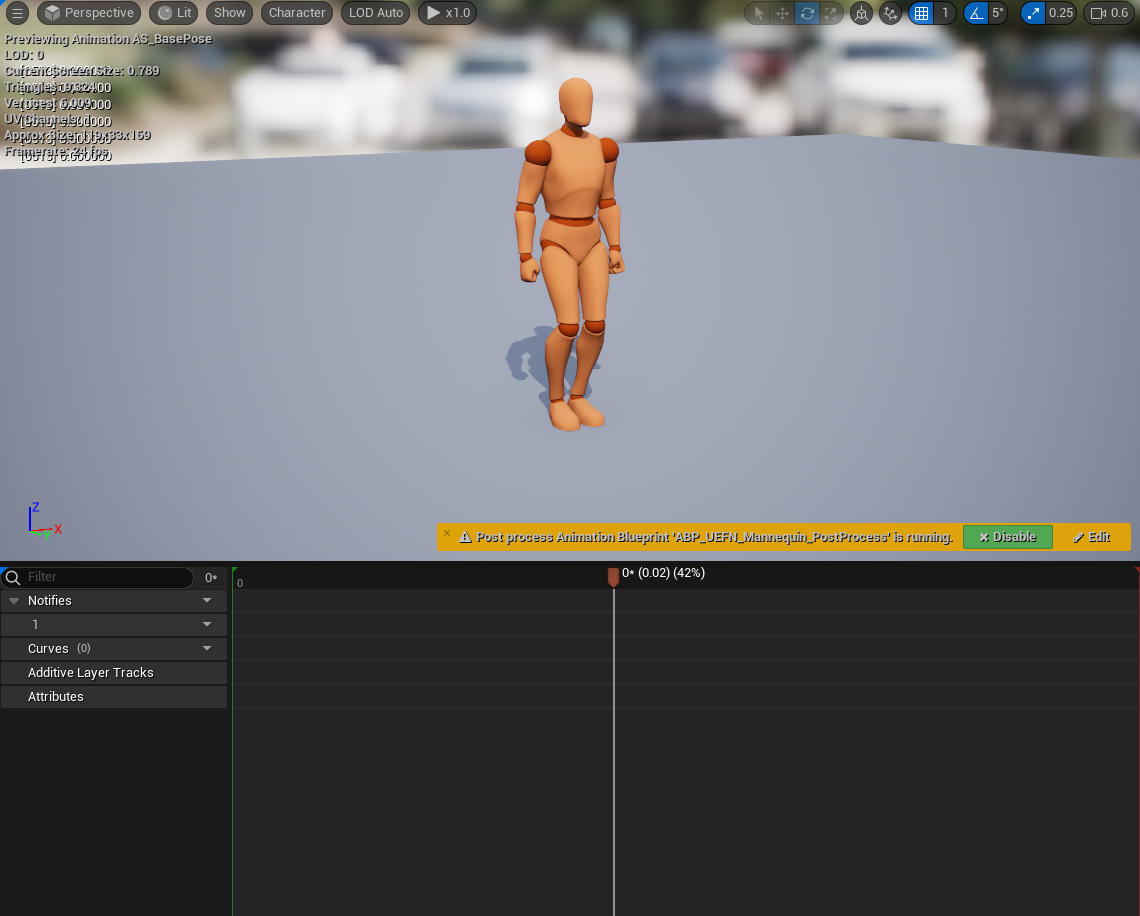This procedural animation project, developed in Unreal Engine, focuses on creating a flexible system for dynamic human movement, which can be highly valuable for animation pre-visualization and accurate foot planting. By using parameter-based controls, the character's leg movement adjusts in real-time to navigate obstacles and handle various conditions, offering a versatile solution for pre-vis animation.
This approach allows animators to quickly prototype and visualize character motion without the need for extensive keyframed sequences. The project’s emphasis on streamlined systems ensures efficient iteration, making it a powerful tool for rapid animation testing and refinement, reducing production time and enhancing workflow flexibility for a studio.
The system takes a single base pose through Control Rig to drive locomotion


Foot Spline System:
In this procedural animation project, I utilized a spline system to drive the character's foot placement, creating realistic, adaptable movement. This approach allows each foot to follow a controlled trajectory, adjusting dynamically to terrain and obstacles in real time, enhancing both the fluidity and immersion of the character's motion. By reducing the reliance on pre-baked animations, the spline system also optimizes performance while maintaining high-quality animation fidelity.
Foot Traces
In this project, I use sphere traces (visualized as a green line) to calculate optimal foot placement based on the character’s direction and velocity. This allows the character to dynamically adjust foot landing spots for smooth, realistic movement on varied terrain, making it an effective tool for rapid animation pre-visualization and testing.
Using Velocity and Curves:
In this project, I used the Evaluate Curve node in Unreal Engine to create a responsive body motion effect when the character transitions into a run. By feeding the interpolated velocity into the curve, I control the timing and intensity of the character’s forward lunge, generating a natural, brief tilt of the torso.
This data is then outputted to a custom Rotate Spine function, which adjusts the character’s spine rotation dynamically. The result is a realistic leaning effect, where the body briefly lunges forward at the start of a run before settling into a balanced stance, enhancing the fluidity and responsiveness of the movement.